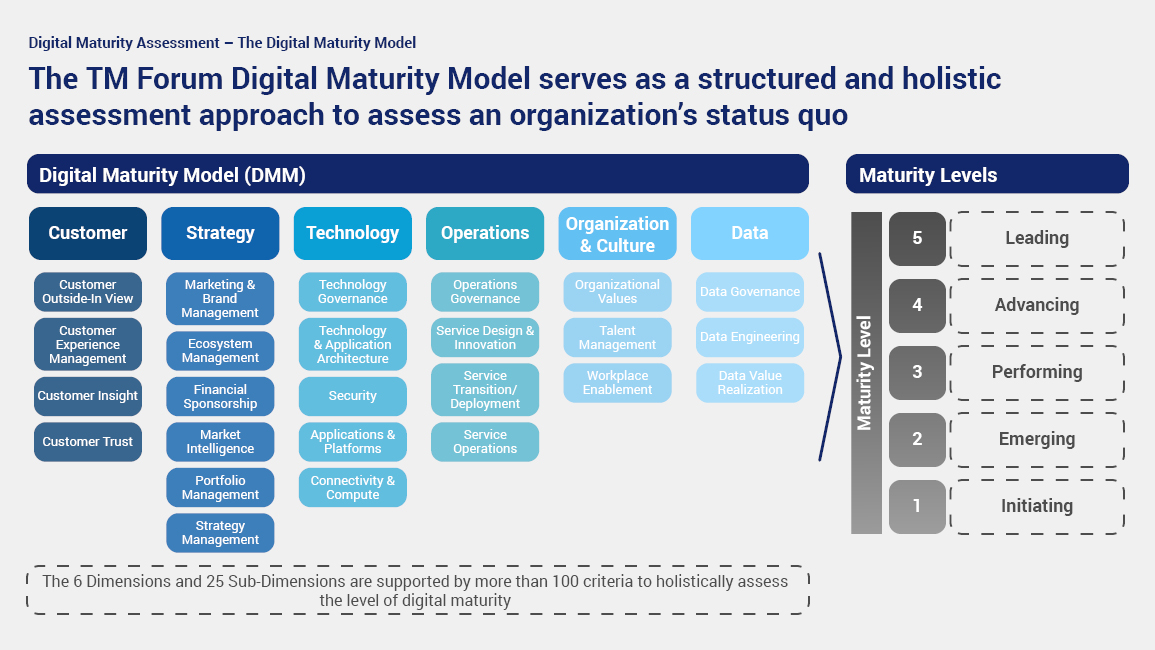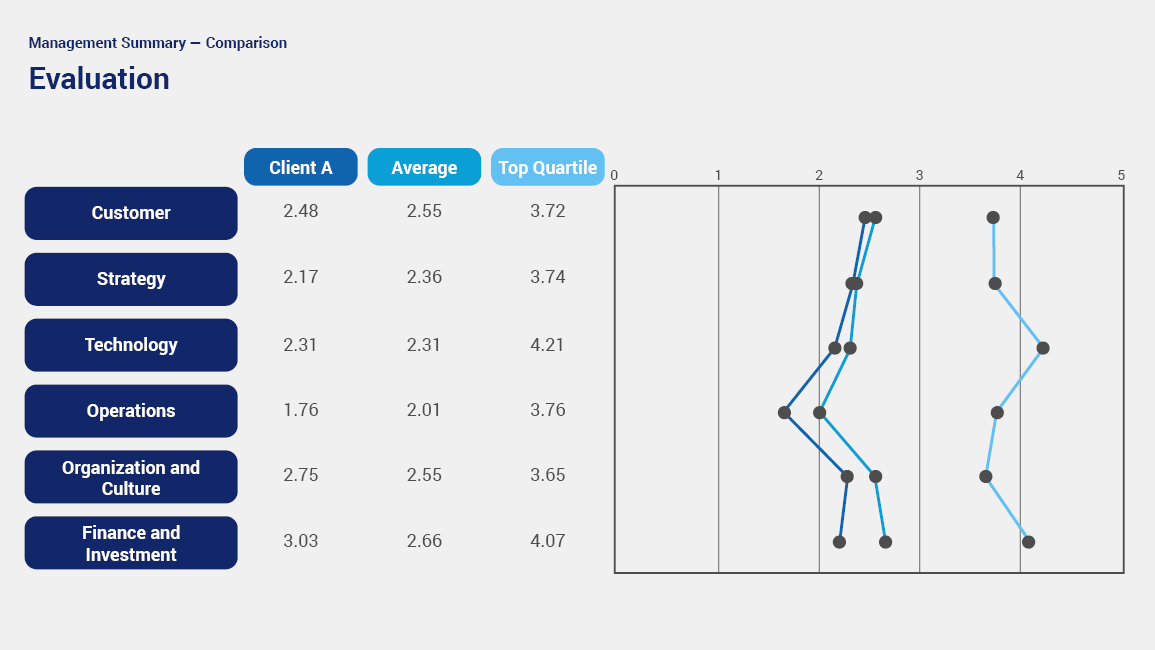Every business, despite its size or industry, faces a changing digital environment with faster evolving cycles than ever before and significant disruptive power, enhanced by continuous technological advancement. At the same time, opportunities and possibilities arise, with promising technologies such as AI, Cloudification, and Big Data. However, to master the digital race, organisations must embark on a digital transformation journey that can only be successful by setting the sails right from the very beginning.
What triggered the development of the Digital Maturity Model?
It is essential and crucial for an organisation to know where it stands and to where it should be heading to ensure a successful digital transformation journey. However, it is hard for an organisation to determine its position and its way forward without a comprehensive guidance. Therefore, Detecon and leading industry partners from TM Forum have joined forces and developed the first industry-standard Digital Maturity Model (DMM) to help organisations navigate the changing digital environment and to master their digital transformation.
What is the DMM?
The DMM is an assessment model that captures an organisation’s current level of digital maturity across the core business dimensions to provide the organization with a clear understanding of its current maturity status and enable them to define focus areas.
The DMM covers six core dimensions, namely, Customer, Strategy, Technology, Operations, Organisation & Culture, and Data. These dimensions are further divided into several sub-dimensions that reflect different facets of a digital maturity. Each sub-dimension is supported by predefined criteria with 5 digital maturity levels, from initiating (Level 1) to leading (Level 5).

How is the assessment carried out?
The participating organisation will be provided with access to our online digital maturity assessment tool containing a set of criteria from the model. The participants would then need to determine, for each criterion, the most accurate description among the five options. A report with assessment results as well as certain benchmarking results will be generated once the participants have completed the DMM questionnaire. The report will give insights on the current status of the digital maturity level within the organisation and a bit more flavour with the comparison to certain benchmarks.

The assessments can also be tailored in various ways to cater to different organisations with different transformation needs, a cross-departmental sentiment analysis can also be carried out, so the organisation has a more transparent view on its internal dynamics.
In practice, it is highly recommended to bridge the organisational transformation initiatives to the DMM and have regular assessments, so the development is measurable and quantifiable, thus success becomes visible.

Video: Introduction to DMM - The Functions and Uses
"Experience shows that telcos are typically very good at new technology but less adept at realigning work and people around that technology.", says Björn Menden, Managing Partner at Detecon. "This presents a big advantage for the ICT companies and telcos that get this right. We identified a synergy with DMM. We need to be able to address the organization to realize full value in digital transformation.”
Watch the video with Björn Menden where he introduces the Digital Maturity Model here.
The catalyst projekt
Within the Catalyst Project, communication service providers (CSPs) work on their digital transformation by taking a data driven approach. The DMM supports this across all dimensions. What is special about this project is that this methodology is applied in an actual process to push the digital transformation forward.







